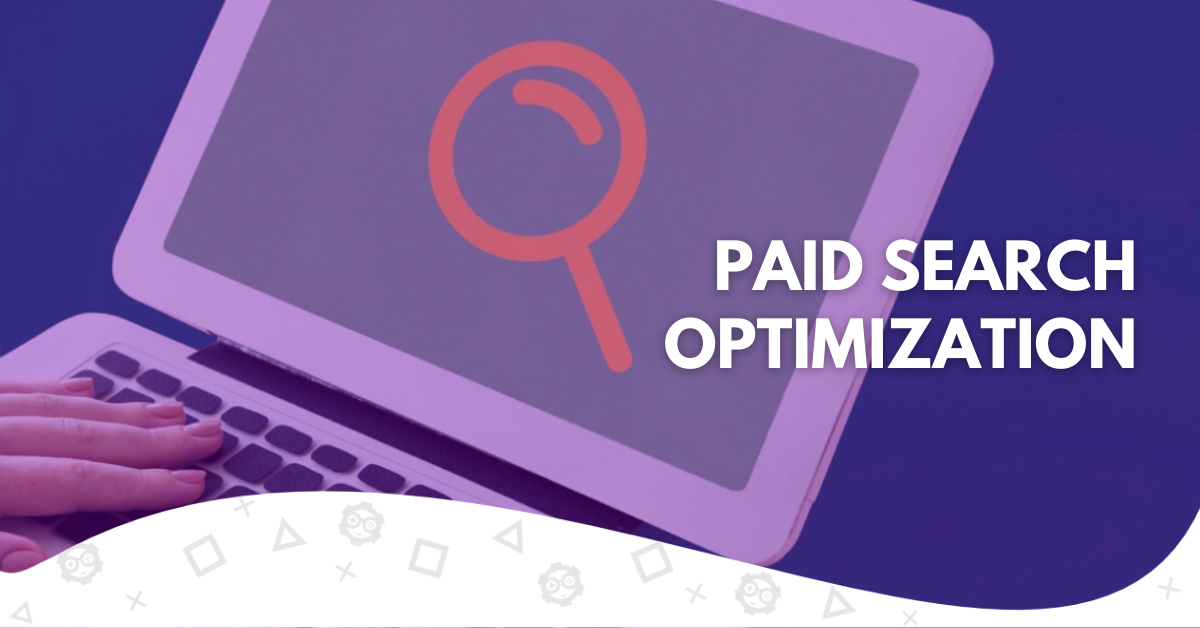Ads do wonders when prepared correctly.
They provide quick results and allow desktop and mobile users to see your product faster than ever.
But, there are moments when your advertising doesn’t work as you would want, and no matter how many times you visit the Keyword Planner to try new search terms or use a different segmentation strategy, you won’t find the real issues affecting your ads.
That’s when you must prepare a paid search optimization.
This process allows you to audit, verify and edit your current and future ad data to improve results and reduce advertising costs. It’s essential for businesses that want to make the most of their budget while getting higher ROAS.
This article explores what paid search optimization is and explains why you should do one.
- What is Paid Search Optimization?
- Paid Search Campaigns Pros and Cons
- How Often Should You Adjust Your PPC Campaigns?
- Measurable KPIs For Your Paid Search Campaign
- Mandatory PPC Optimizations
- Conversions Over Clicks
- The Importance of Quality Score
- Is Search Engine Optimization the Same as Paid Search Optimization?
- How to Do a Paid Search Optimization?
- How a Complete Paid Search Optimization Looks Like
- The Ultimate Paid Search Optimization Checklist for Successful Businesses
- A Paid Search Optimization Does Wonders to Your Business
What is Paid Search Optimization?
Paid search optimization refers to the process of adjusting PPC campaign settings to improve their performance.
It requires multiple processes, including checking your current paid search metrics, changing the issues, and testing to see if the problems are solved.
Your optimization could take multiple approaches depending on where the issue is located.
For example, if your paid search campaign fails in account-level setup, you may need to recreate all your ad sets from scratch.
Paid Search Campaigns Pros and Cons
The paid search campaign is not all roses It contains iterations and events that could be considered as drawbacks.
Let’s break this down:
| Pros | Cons |
| Improves paid ad targets. | Optimizes non-visual Google Ads. |
| Faster results from paid search. | Usage is limited to search engines. |
| CTR increases after optimization. | Require extensive research to get results. |
| Allows conversion tracking and data analysis due to machine learning. | |
| Better control over marketing budget. |
PPC campaigns in search engines require a holistic point of view to make it work. So, you need resources and specialists in the area.
How Often Should You Adjust Your PPC Campaigns?
The time to adjust your PPC campaigns varies depending on three factors that we like to call the “definitive ifs”:
- If your PPC ads have less than two weeks, give it more time to gather valuable data that you can use for iteration.
- If your ad set started with much guesswork, wait until search engines provide information about your optimal buyer persona.
- If your ads aren’t getting enough impressions or clicks initially, give it more time.
Considering these “ifs”, we can say that a proper time to adjust your campaigns is between 2 and 4 weeks. It also depends on how much information you have to make the iterations.
Measurable KPIs For Your Paid Search Campaign
Key Performance Indicators are quantifiable metrics you can use to evaluate and track the performance of your search campaigns. They provide insights into how well a campaign is meeting its objectives.
Some typical search KPIs include:
- Impressions: How often your ad is displayed.
- Click-Through Rate (CTR): The ratio of clicks to impressions.
- Cost Per Conversion: The total campaign cost is divided by the number of conversions.
- Cost Per Click (CPC): The amount you pay for each click.
- Conversion Rate: How often an interaction becomes a conversion (calculated as conversions divided by interactions).
- Return on Ad Spend (ROAS): The revenue earned for every dollar spent on ads.
- Cost Per Acquisition (CPA): The expense incurred to convert a lead.
- Impression Share: The proportion of impressions your ads achieve relative to the potential impressions they could get.
Identify what’s best for your business Google search campaign to develop a complete optimization.
Mandatory PPC Optimizations
Before starting to make optimizations like there’s no tomorrow, you must define your campaign’s goals and consider the measurable KPIs mentioned above that align with them.
- Are you looking to increase sales?
- Do you want to increase brand awareness?
- Is your budget draining too fast?
- Looking to improve your ad data available?
It doesn’t matter what your objective is, you must establish it before starting.
After defining your goals, you can follow these strategies to optimize your PPC campaign:
Keywords Review
Keywords are terms we use in the search engine to find something we want to know. Whether it is a simple query or purchasing something, we base our search on a search term.
Your ads must contain relevant keywords for your target audience. This way, you’ll appear when they search for something related to your business.
In paid search optimization, we use keywords (like in an SEO strategy) to:
- Organize campaigns.
- Create an original copy.
- Find similar ads.
- Prepare relevant landing pages.
- Identify search intent.
This is why a keyword review is mandatory to ensure you appear in the searches your target does at every funnel stage.
How do you do that?
- Ensure you focus on semantic search terms.
- Update your negative keywords to block places you don’t want to appear.
- Locate terms opportunities in the search engine results with low competition and high search volume.
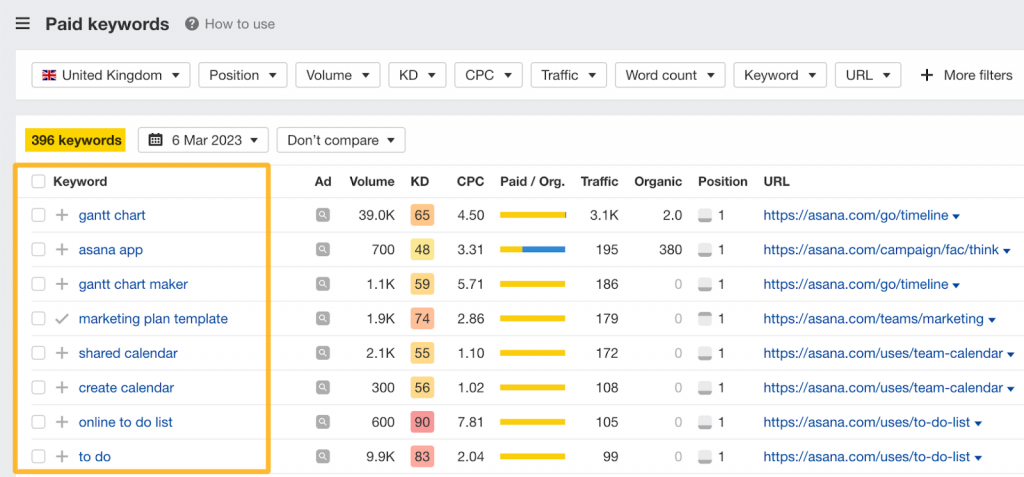
Ad Copy and Format Reviews
Review different ad formats and copies regularly to identify which ones perform better. You must ensure they align with the search terms users enter in the search engine.
This demonstrates that your ads are contextually relevant and reach the right audience.
Your ads should have distinct and compelling CTA, guiding viewers to the next step in their customer journey. Also, include relevant keywords in the headlines to boost relevance and improve your ad’s quality score.
Images and videos should be related to your copy.
Use clear, high-quality images free from excessive filters or distortions, and avoid using collages or digital composite backgrounds.
Focus on the product/service and highlight its unique benefits with a compelling text. Incorporate prices, promotions, and exclusives to make your ads more inciting.
Aim to create 3 to 4 ads per ad group for variety and testing opportunities.
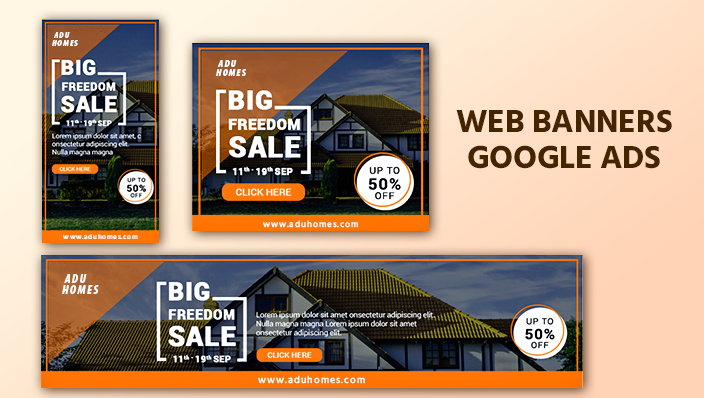
Landing Page Enhancement
Your landing pages should seamlessly extend from your ads, ensuring visitors feel they’ve landed in the right place.
Key questions to consider include:
- Is there consistency between your ad and the landing page?
- Is the CTA from your ad immediately visible?
- Do visitors grasp your value proposition instantly?
- Can they effortlessly explore the rest of your side?
Website speed is also important. If your site takes longer than 3 seconds to load, users will likely abandon it, adversely affecting the user experience. Tools like Google’s Pagespeed Insights can help assess your site’s speed.
If your landing page’s performance is still not running correctly after implementing all the best practices, consider evaluating and possibly switching your hosting provider for improved speed and performance.
Ad Budget Managements
Budget optimization is a unique process tailored to your bidding strategy and campaign goals.
The common practice is allocating funds to your high-performing ads while reducing money from underperforming ad sets. But this is not always the best thing to do.
Why?
Certain campaigns, such as YouTube ads, might not showcase high conversion rates, but they can significantly influence the buyer’s journey, acting as touchpoints that drive awareness or consideration.
So, it’s crucial not to drastically pause or cut the budget for these seemingly underperforming campaigns.
Instead, understand each ad type’s specific role within your conversion funnel and adjust budgets accordingly, ensuring a holistic and effective advertising strategy.

Bidding Optimizations
While various bidding methods are available, we recommend starting with manual cost-per-click (CPC).
Google Ads primarily aims to maximize clicks because this is how they earn more money. They are less concerned about the quality or relevance of those clicks to your business. So, If your goal is to increase volume, the automatic CPC bidding system might be your go-to.
However, if you’re looking for precision and control, especially during the initial phases of paid search campaigns, you should use manual bidding.
This allows you to increase the ad visibility and focus on keywords with a proven conversion track record, all while potentially reducing the cost-per-acquisition (CTA.)
On the other hand, manual bidding is not as simple as it sounds. While it offers granular control, it demands constant attention to ensure you’re placing the right bid at the opportune moment. This means regularly monitoring and adjusting bids based on campaign performance, market trends, and competitive landscape.

A/B Testing
This method compares two or more PPC variations to determine which performs better. The A/B testing approach allows you to make data-driven decisions, ensuring your paid search campaigns are as effective as possible.
Every ad element is tested, from the headline and description to the display URL and landing page. The goal is to understand which version resonates more with the target audience, leading to higher click-through rates, conversions or other desired outcomes.
As this method is essential for optimization and offers valuable insights, it requires careful planning and execution. You must taste one element at a time, wait for statistically significant results, and continuously monitor key metrics.
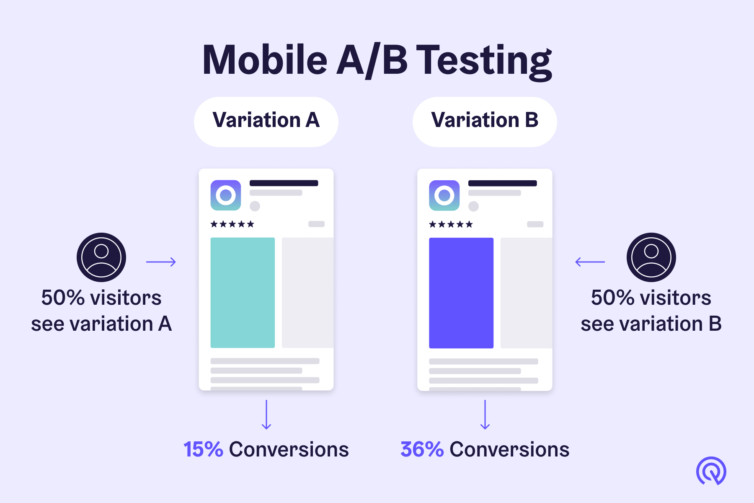
Responsive Paid Search Campaigns and Websites
As a business, you must have a “mobile-first” mindset.
We developed a short poll with hundreds of participants that revealed that 74% of smartphone users use mobile search engines during their research phase. Of these, 93% eventually make a purchase.
Responsive ads adapt by displaying various combinations of headlines and descriptions to provide the most relevant message to potential customers. Google Ads tests and identifies which combinations go better with users.
The primary advantage of responsive search ads is their flexibility. They adjust to device widths, ensuring a consistent and optimal viewing experience across different screen sizes.
However, it’s not just about the ads.
A responsive website is also crucial to enhance user experience and increase conversions. Once a potential customer clicks on an ad, they should land on a page that provides a seamless browsing experience, no matter their device.
A landing page that adjusts to various screen sizes reduces bounce rates and improves user engagement.

Conversions Over Clicks
You could use a maximize conversions strategy to optimize paid search.
The ability to measure conversions provides insights into the efficacy of your campaigns. It also offers guidance on potential enhancements to refine further and elevate outcomes.
While metrics like clicks, impressions and click-through rate (CTR) are valuable for evaluating digital marketing campaigns, you shouldn’t focus solely on them, especially when managing multiple campaigns.
For example, a high CTR might give the impression of a successful ad campaign. However, if it has a low conversion rate, it indicates that your landing pages require fine-tuning.
In such scenarios, we recommend initiating A/B testing for your landing pages to ensure that the ad content and landing page copy are in sync.
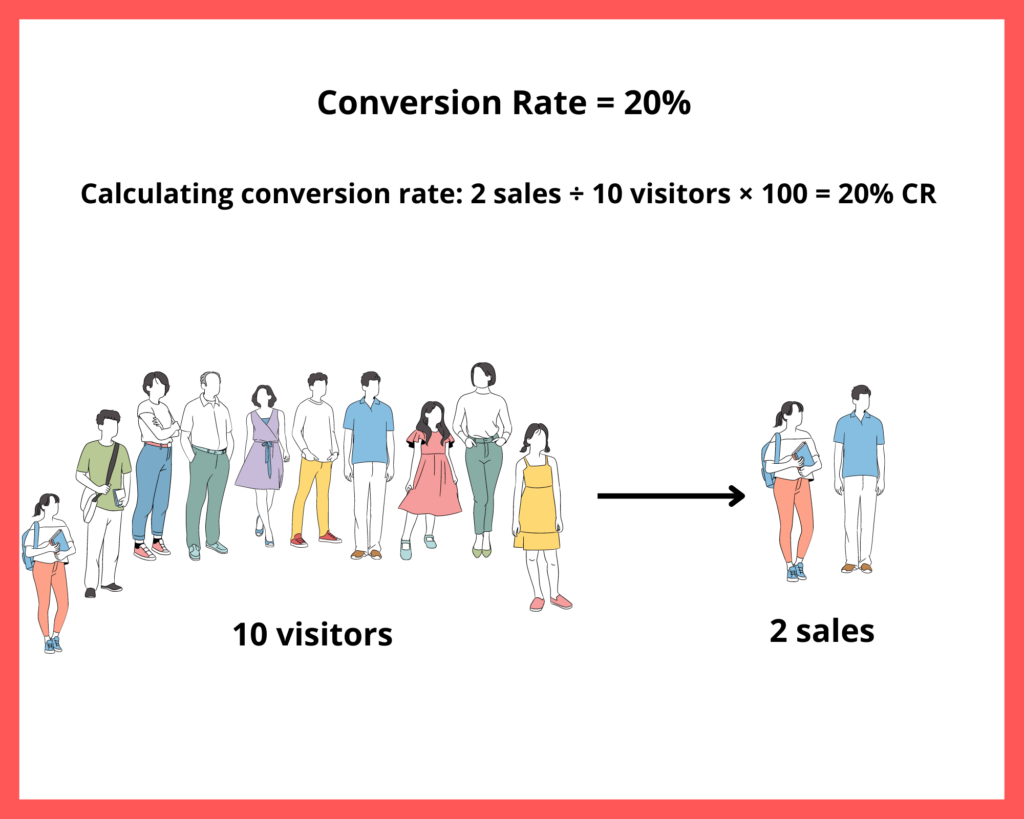
The Importance of Quality Score
This is a crucial metric in PPC advertising, particularly within Google Ads. It represents Google’s assessment of the relevance and quality of your keywords and PPC ads.
Five elements influence your Quality Score:
- Your click-through rate.
- The relevance of your keywords to their respective ad groups.
- The landing pages’ quality and relevance.
- The pertinence of your ad text.
- Your overall historical performance on Google Ads.
A high-quality Score leads to better ad placements and reduced costs. On the other hand, a low-quality score results from incorporating negative keywords or a mismatch between all the ad content involved.
Is Search Engine Optimization the Same as Paid Search Optimization?
Search Engine Optimization (SEO) and Paid Search Optimization (PPC) are both integral parts of Search Engine Marketing (SEM), but they serve different purposes and require different strategies.
SEO is a strategy that enhances a website’s visibility in organic search results. This approach requires time and effort investment to achieve higher rankings without the direct costs associated with clicks.
On the other hand, PPC is designed to drive immediate traffic through paid advertisements. You can allocate a direct budget and pay for each click on your PPC ads. You get faster results, ensuring high visibility on search results pages.
How to Do a Paid Search Optimization?
Below, you will find a quick step-by-step guide to make successful optimization for your ad campaigns and landing pages:
- Set Clear Objectives: Define what you want to achieve with your paid search campaign, whether it be increasing traffic, generating leads, or boosting sales.
- Keyword Research: Find relevant keywords, identify high-volume and low-competition keywords, and consider long-tail keywords, which often have a higher CR. Make sure your campaigns are relevant to those search terms.
- Ad Copy Optimization: Write compelling headlines, descriptions and titles, including a clear CTA and regularly test your copy in different ads to see what resonates most with your audience.
- Landing Page Optimization: Ensure your landing page is relevant to your ad copies, loads quickly and are mobile-responsive.
- Implement Ad Extensions: Use sitelink, callout, and structured snippet extensions to provide more information and increase CTR and conversions.
- Adjust Bids: Use manual bidding to gain ad visibility. Also, increase bids for high-performing keywords and decrease or pause low-performing ones.
- Segment Campaigns: Break them into relevant ad groups based on product or service categories to allow more targeted ad copy and better keyword management.
- Use Negative Keywords: Exclude irrelevant search terms to prevent your ads from showing up to unrelated queries.
- Set a Budget: Determine a daily or monthly budget based on your objectives and potential return on investment.
- Monitor & Analyze Performance: Regularly check metrics like click-through rate (CTR), conversion rate, and return on ad spend (ROAS). Use tools like Google Analytics to gain deeper insights into user behavior.
- Define & Repeat: Review and refine your strategies based on performance data.
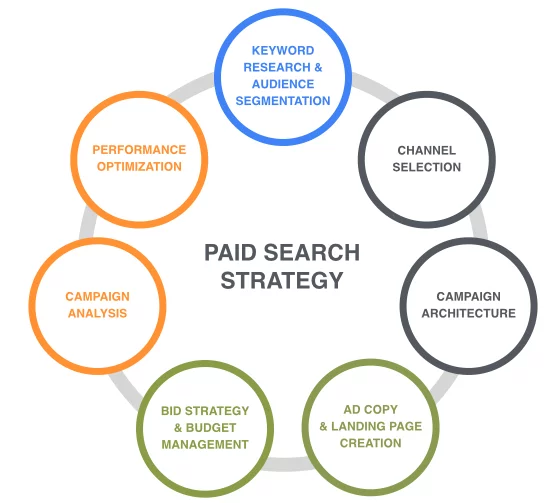
How a Complete Paid Search Optimization Looks Like
The following case study is an example of a paid search optimization developed so you can understand this process’s scope and results.
Let’s say there’s a game developer called PixelWarriors and they approached you with a challenge.
While their game had received critical acclaim, they struggled to gain visibility in the saturated gaming market.
So, the whole paid search optimization would look like this:
- Objective Setting: PixelWarriors wanted to drive more game downloads, increase sign-ups for their in-game events, and boost merchandise sales.
- Keyword Research: Your analytics team delved into the gaming niche’s search trends. They identified high-potential keywords like “indie RPG games,” “best new mobile RPGs,” and “PixelWarriors game guide.” They also pinpointed long-tail opportunities such as “how to advance in PixelWarriors” and “PixelWarriors in-game events.”
- Crafting the Ad Copy: Your creative team developed engaging ad copies based on keyword insights. The headline was “Dive into PixelWarriors: The RPG Revolution.” The ad descriptions highlighted unique game features, exclusive in-game events, and limited-time merchandise discounts.
- Landing Page Enhancement: To ensure a seamless user experience, you collaborated with PixelWarriors to optimize their game’s landing page. You ensure that the ad’s promises were immediately visible on the landing page, with clear CTAs guiding users to download the game or sign up for events.
- Ad Budget Management: Given the competitive nature of gaming ads, you strategically allocated PixelWarriors’ budget. You prioritized high-performing keywords, ensuring maximum visibility during peak gaming hours.
- Bidding & A/B Testing: You started with manual cost-per-click (CPC) bidding to maintain control. Over time, as data accumulated, you tested different ad variations, adjusting bids based on performance, market trends, and the competitive landscape.
- Responsive Ad Campaigns: Recognizing that most of PixelWarriors’ audience played on mobile, you emphasized creating responsive ads. These ads are adjusted to different device widths, ensuring an optimal viewing experience.
Within a month, PixelWarriors saw a 150% increase in game downloads and a 200% boost in event sign-ups. The in-game merchandise sales also surged by 120%.
You continued to monitor the campaign, making data-driven adjustments to maintain and further improve these results.
The Ultimate Paid Search Optimization Checklist for Successful Businesses
We’ve prepared a clear and concise checklist you should follow to improve your online advertising:
Account-level setup
Turn off auto-apply for ad suggestions to maintain control over ads.
Exclude ads from sites that don’t match your brand (Content exclusions).
Exclude existing customers from seeing your ads (Customer lists).
Target hyper-focused ad groups (Campaign/ad group structure).
Ensure accurate conversion tracking.
Check if Google Tag Manager is installed and firing properly.
Track every type of conversion.
Campaign-level setup
Target geographic regions where conversions are likely (Locations).
Set language targeting (e.g., English, Spanish).
Target audience based on demographics (age, income).
Ensure ads are displayed on relevant device types.
Set ad scheduling based on when the audience is likely to convert.
Start with manual cost per click (CPC) before adjusting bid strategy.
Use relevant search terms as keywords.
Maintain a list of negative keywords.
Ads
Ensure ad copy matches relevant search terms and includes a call to action.
Match landing pages with the ad.
Utilize ad extensions (recently rebranded as assets).
Create remarketing display/RLSA campaigns.
Set up hyper-targeted display campaigns for brand awareness.
Monitor network performance (Google Search Network and Partner Networks).
Have a privacy policy on your site, including information on Google Analytics and remarketing.
Update data protection contacts for Google Ads Data Processing Terms and EU GDPR.
Optimizations
Regularly check and boost your Quality Score.
Review and update keyword lists.
A/B test ad copy and formats.
Ensure website and landing pages align with ads.
Allocate budget based on campaign performance.
Adjust bidding strategy based on goals and performance.
Implement KPI-specific optimizations.
A Paid Search Optimization Does Wonders to Your Business
Paid search optimization has proven a reliable way to improve ad performance and enhance budget management settings.
When preparing a search strategy, this is an essential step to take two or three weeks after making an ad placement.
But as you can see, it’s a process that takes time and requires expertise. That’s why GamerSEO is here to help. Our specialized staff ensures your ad appears in the correct places, targets the right audience and uses the proper keyword phrase on a user’s search.
We enhance your marketing channels while taking a holistic approach to help you reach your goals. Contact us now to get more website visitors!

A PPC specialist who started with organic social media. For several years, the core of his activities are:- Google Ads, Microsoft Ads, Meta Ads, TikTok Ads, Twitter Ads, Linkedin Ads. He has led campaigns with a global reach, e.g. for FootballTeam, G2A, ETOTO, as well as many smaller campaigns in the sports, construction and financial industries. Has full focus on ROAS. Privately, a fan of football, history of wars and Star Wars.

